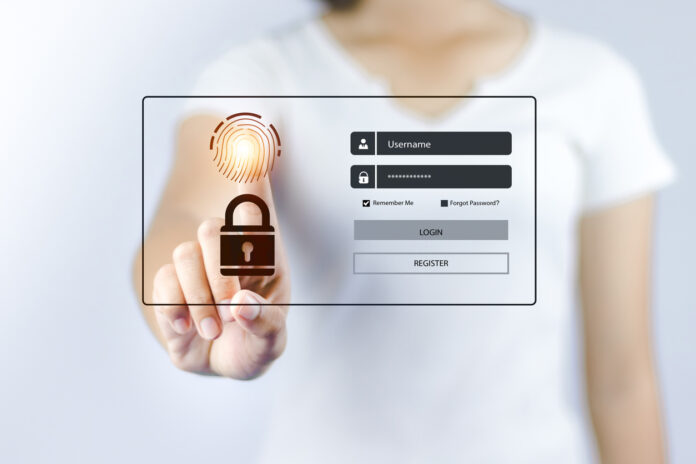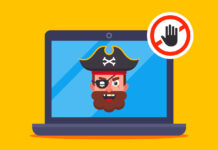
In an era where digital landscapes are evolving, and cyber threats are on the rise, the importance of security cannot be overstated. Every day, countless data breaches occur, leading to unauthorized access to personal information. Protecting online assets and information has therefore transitioned from a ‘nice to have’ to an absolute necessity.
One of the frontline defenses against cyberattacks is multi-factor authentication (MFA). This security measure enhances the traditional username and password model by integrating an additional layer (or multiple layers) of verification, enhancing your level of security.
What is Multi-Factor Authentication (MFA)?
Multi-factor authentication, also known as two-factor authentication, is a security mechanism used to verify a user’s identity when accessing a system or digital service. It goes beyond the traditional single-factor authentication, which typically relies on something the user knows, like a password. MFA adds one or more additional layers of verification to enhance security by requiring users to present multiple forms of evidence, or factors, to prove their identity. These factors fall into three main categories:
- Something You Know: This is the traditional factor and typically involves a password or Personal Identification Number (PIN). You must provide something only you should know. While passwords are common, MFA may require more complex and secure passphrases or PINs.
- Something You Have: This factor involves something you physically possess. Common examples include a smartphone, security token, or smart card. To complete the authentication process, you may need to enter a one-time password or code received via SMS or generated by an authenticator app.
- Something You Are: This factor relies on your unique physical or biometric characteristics. Biometric data can include fingerprints, facial recognition, retinal scans, voice recognition, or even palm prints. Biometric MFA methods are becoming increasingly popular due to their convenience and high level of security.
The idea behind MFA is to create a layered defense, making it significantly more challenging for unauthorized cybercriminals to gain access to an account or system. Even if an attacker manages to obtain one factor (e.g., a stolen password), they would still need to provide the other factor(s) to successfully authenticate. This significantly reduces the risk of data breaches.
Examples of Multi-Factor Authentication
MFA can take various forms depending on the service or platform you’re using. Here are several common examples of how MFA can be implemented:
SMS or Email Verification
After entering your username and password, you will receive a one-time passcode via SMS text message or email. You must enter this code to complete the authentication process. This method relies on “something you have” (your phone or email access) as the second factor.
Authenticator Apps
You can install an authenticator app (e.g., Google Authenticator, Microsoft Authenticator, or Authy) on your smartphone. After entering your password, you open the app to retrieve a time-based or one-time code that changes periodically. You then enter this code to complete the login process.
Push Notifications
After entering your credentials, you receive a push notification on your mobile device. You can approve or deny the login attempt with a single tap.
Security Questions
Although less secure than other methods, some services may use security questions as the second factor. You must simply answer a predefined set of questions correctly to access your account.
Geolocation-Based Verification
The system checks your location during login. If the login attempt is from an unusual or unauthorized location, additional authentication steps are required.
The specific methods and options available for MFA can vary from one service to another. You often have the flexibility to choose the method that suits you best, provided the service supports your preferred MFA options.
How Does Multi-Factor Authentication Work?
Here’s how MFA typically works in practice:
- User Initiation: You initiate the login process by providing your username and password.
- First Factor Authentication: The system verifies your first factor by confirming your password.
- Second Factor Authentication: If the first factor is successfully verified, the system requests the second factor. This might involve sending a one-time code to your smartphone or asking for a fingerprint scan.
- Completion of Authentication: If both factors are successfully authenticated, you’re granted access. If one or both factors fail, access is denied.
The exact MFA implementation can vary based on the system, application, or service. Some services allow you to choose from different second-factor options, while others may enforce specific methods. Additionally, some systems may incorporate additional factors beyond these three categories, such as geolocation or behavioral patterns.
Pros and Cons of Multi-Factor Authentication
MFA is considered a critical component of modern cybersecurity and is essential for protecting sensitive data, online accounts, and systems from unauthorized access and potential breaches. It is widely used in various industries, including finance, healthcare, and technology, to enhance security and safeguard user information.
That being said, there are both advantages and disadvantages to enabling MFA.
Pros of Multi-Factor Authentication
- Enhanced Security: MFA significantly improves security by requiring multiple forms of verification. Even if one factor is compromised, the chances of unauthorized access are greatly reduced.
- Mitigation of Password-Based Attacks: MFA helps protect against common attacks like brute-force or credential stuffing, as attackers would need more than just the password to gain access.
- Protection of Sensitive Data: It’s effective in safeguarding sensitive information, such as personal and financial data, health records, and intellectual property.
- Compliance Requirements: MFA is often required by industry regulations and data protection laws, ensuring organizations remain compliant.
- Flexibility and User Choice: Users can often choose the MFA method that suits them best, allowing for flexibility and convenience.
- Account Recovery and Backup Codes: MFA often provides account recovery options, such as backup codes, in case users lose access to their primary authentication method.
Cons of Multi-Factor Authentication
- Complex Setup: Setting up MFA can be somewhat complex for some users, especially those who are not tech-savvy. It may require downloading apps, registering devices, or configuring hardware or software tokens.
- Inconvenience: Some users find MFA methods like one-time codes or biometrics to be slightly inconvenient. Forgetting or losing the second factor can cause access issues.
- Privacy Concerns: Some users may be concerned about the storage and handling of biometric data if biometric authentication methods are used.
- Resistance to Change: Users and employees may resist adopting MFA, viewing it as an additional burden or barrier to access.
How Multi-Factor Authentication Affects Password Sharing
In the complex landscape of online security, password sharing emerges as a common, yet risky, practice. In this light, MFA plays a pivotal role. Not only does it offer additional security, but it also curtails the implications and reduces the incentive of password sharing. By requiring additional verification steps, MFA ensures that access is granted only to authorized users, thereby mitigating the risks associated with shared passwords.
How StreamSafely Can Help You
Online security is critical when it comes to protecting yourself from phishing scams, malware, and more. Now that you have all the information you need about how MFA affects your online presence, make sure you know how to protect yourself when streaming your favorite shows and movies from the comfort of your own home. There are many illegal or dangerous streaming platforms that offer pirated content for free. But it’s important to avoid those sites at all costs as they can expose you to fraud, malicious pop-ups, and potential legal troubles.
StreamSafely provides all the tools you need to keep your streaming experience safe and secure. We’ll help you find a reliable streaming platform to watch your favorite content safely. Educate yourself and learn more about how to stream safely.




